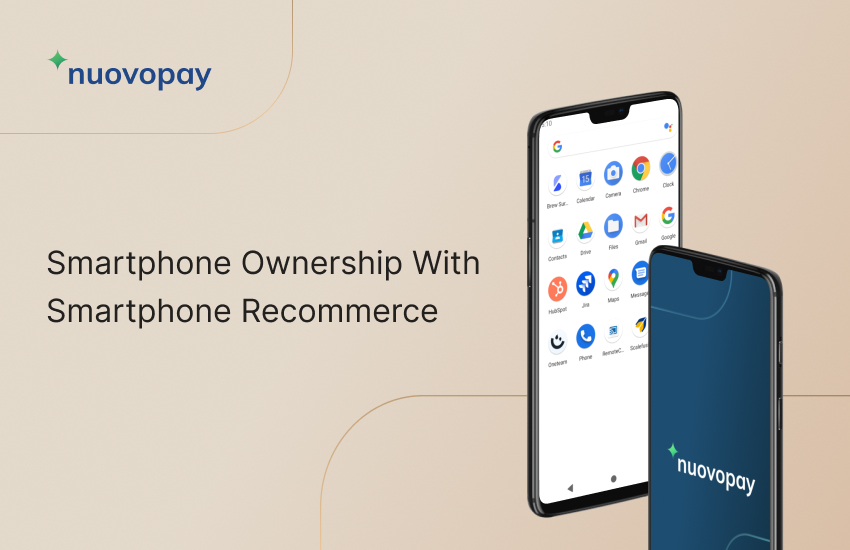An increase in upgrade cost has been one of the main reasons for the growing adoption of used smartphones. An increase in the average selling price (ASP) of smartphones, especially high-end ones, has led to consumers holding on to their phones for a longer time. This has increased the prices of refurbished phones. But more brand options, relatively lower price points, and aspirational value of an upgraded smartphone are driving the demand for used smartphones. And smartphone recommerce, which is organized and works according to government-led requirements, is driving the acceptability and accountability of owning refurbished smartphones.

What is Recommerce?
Recommerce comes from “reverse commerce,” or selling pre-owned goods. This business model isn’t new–swap meets and flea markets have been around for decades, serving as marketplaces for selling unneeded goods. Today, the informal nature of reselling products has given way to sophisticated online platforms.
Websites like Craigslist and eBay have made buying and selling old goods easier. They are easy to use and provide confidence in purchasing refurbished goods. Today, the used eCommerce industry is expanding fast, thanks to technologically advanced recommerce smartphone providers.
How Does Smartphone Recommerce Work?
There are several checks and procedures that used smartphones must go through before they enter the used phone market.
Step 1. A customer purchases a new smartphone. After a few years, the customer decides to sell the smartphone and puts it up for sale on a smartphone recommerce website.
Step 2. Collectors from the platform procure the used smartphone directly from the consumer. They evaluate the used smartphone and pay the best price.
Step 3. Refurbishers then prepare the smartphone for reuse. They clean the device, upgrade the software, and make necessary repairs to make it ready for resale.
Step 4. The recommerce platform makes refurbished smartphones for sale on its website.

“Refurbished and used devices continue to provide cost-effective alternatives to both consumers and businesses that are looking to save money when purchasing a smartphone.”
Anthony Scarsella, Research Manager, IDC
Read More: The Rise of the Smartphone-only UserBenefits of Smartphone Recommerce
- It overcomes traditional challenges – Recommerce companies address traditional pain points that the used phone market used to face. These included a lack of transparency in pricing, time-consuming processes, lack of product warranty, and lack of digital presence for purchasing phones.
- It can be affordable – High-end smartphones with higher average selling prices (ASP) are cost-prohibitive for most consumers. Buying a high-end used phone from a recommerce website is like shopping with a permanent coupon code. When expensive used smartphones enter the market again, they become affordable and drive higher demand.
- It builds trust – Buying used phones requires an element of high trust factor with consumers. To ensure used phones work like new, smartphone recommerce players in the organized segment follow a digitalized and streamlined process. They test and verify phones, bundle accessories, and offer warranties. Cashify, an omnichannel platform that sells used phones in India, has introduced a try-and-buy option to build and maintain trust.
- It drives sustainability – By extending the life of a smartphone, recommerce companies are helping reduce electronic waste. Minimizing e-waste helps conserve the Earth’s limited resources and reduce the amount of energy needed to make new smartphones. Recommerce platforms drive sustainability while meeting the growing smartphone demands from emerging markets.
Challenges of Smartphone Recommerce
- EMI payment default – Several online used smartphone sellers offer smartphone financing options for consumers. For example, Trocafone, a smartphone recommerce company in Brazil, provides refurbished smartphones on monthly payments. Offering smartphones on financing introduces commercial risk, including late payments and EMI default. With NuovoPay, recommerce players can remind customers to make their payments on time and remotely lock their devices to improve revenue collection.
- Lack of central repository containing device information – Smartphone financing providers may use smartphone locking technology that locks mobile phones if customers default payments. Some consumers sell their financed smartphones which may eventually dupe some buyers. Currently, there isn’t a device registry that can instantly flag a financed device.
Wrapping Up
Recommerce companies have the potential to put more used phones in the hands of consumers, ensuring the majority of consumers get digitally connected to narrow down the global digital divide.





